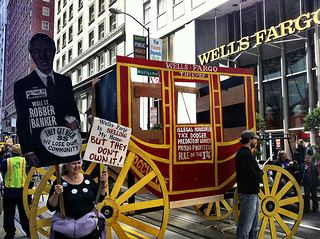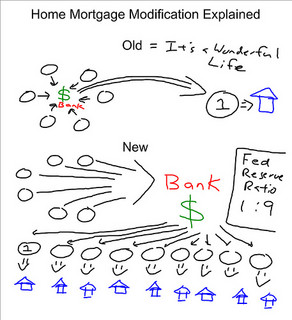Since the start of the HAMP program, servicers have been providing trial plans while leaving the door open to claim that there has not been a modification. As described by Diane Thompson in “Foreclosure Modifications” (86 Wash. L.Rev. 755) servicers recover all their costs after a foreclosure) and receive fees beforehand – the incentive is to stretch out the delinquency without a modification or foreclosure. Courts have slowly been acknowledging the unfairness of this system, in which the property is eventually foreclosed. One decision was based on enforcement of contract based on an offer and acceptance ; another on grounds of promissory estoppel. In a recent decision, the servicer claimed that, as there was no modification agreement signed by the servicer, the owner’s claim is barred by the statute of frauds. The court said no -the doctrine of equitable estoppel barred the defendant from raising this defense, as it would constitute fraud.
 In Angelica Chavez v. Indymac Mortgage Services, Chavez had a $380,000 refinance loan secured by a deed of trust. She got behind and began loan modification talks with Indymac. They offered her a “Home Affordable Modification Trial Period Plan (Step One of Two-Step Documentation Process)” (the Trial Period Plan) under HAMP. The Trial Period Plan required her to make three monthly payments.
In Angelica Chavez v. Indymac Mortgage Services, Chavez had a $380,000 refinance loan secured by a deed of trust. She got behind and began loan modification talks with Indymac. They offered her a “Home Affordable Modification Trial Period Plan (Step One of Two-Step Documentation Process)” (the Trial Period Plan) under HAMP. The Trial Period Plan required her to make three monthly payments.
The Trial Plan Language
 California Real Estate Lawyers Blog
California Real Estate Lawyers Blog


 In
In  In Corvello v. Wells Fargo Bank, the court framed the issue: whether the bank was contractually required to offer the plaintiff a permanent loan modification after they complied with the requirements of a trial period plan (“TPP”). The answer was yes. The court first reviewed the federal programs resulting from TARP to assist homeowners. It noted that Wells Fargo, and others, signed “Servicer Participation Agreements” with the U.S. Treasury. It entitled the lenders to incentive payments for loan modifications, and requires them to follow Treasury guidelines.
In Corvello v. Wells Fargo Bank, the court framed the issue: whether the bank was contractually required to offer the plaintiff a permanent loan modification after they complied with the requirements of a trial period plan (“TPP”). The answer was yes. The court first reviewed the federal programs resulting from TARP to assist homeowners. It noted that Wells Fargo, and others, signed “Servicer Participation Agreements” with the U.S. Treasury. It entitled the lenders to incentive payments for loan modifications, and requires them to follow Treasury guidelines. In
In  In
In  In
In  It is a general rule in California law that a lawsuit to set aside a trustee’s sale for irregularities in sale notice or procedure should be accompanied by
It is a general rule in California law that a lawsuit to set aside a trustee’s sale for irregularities in sale notice or procedure should be accompanied by